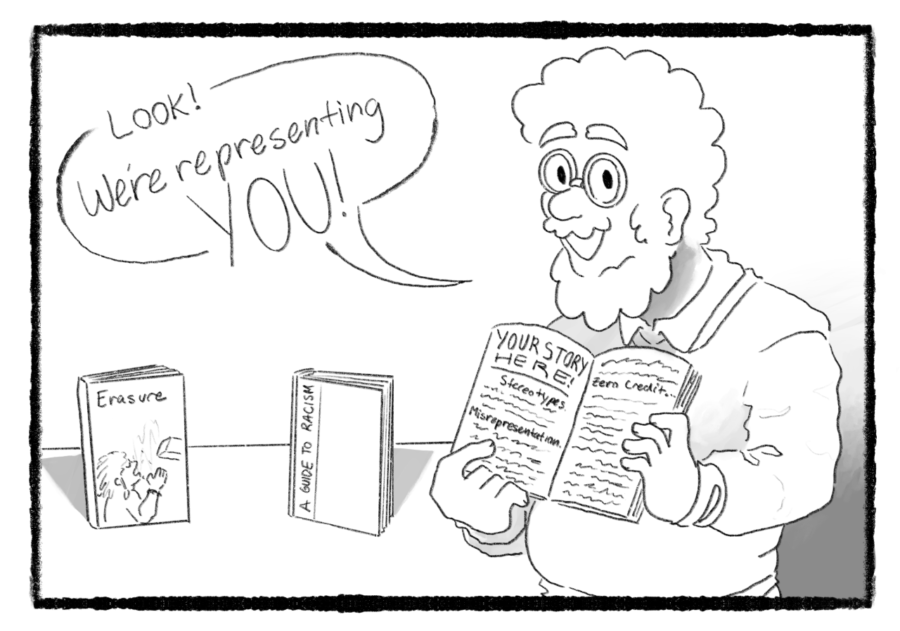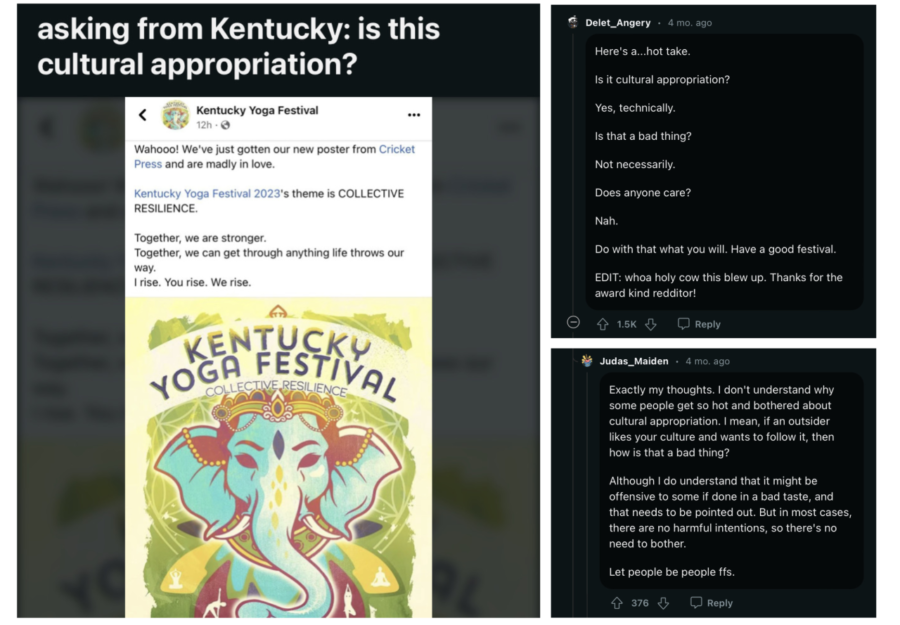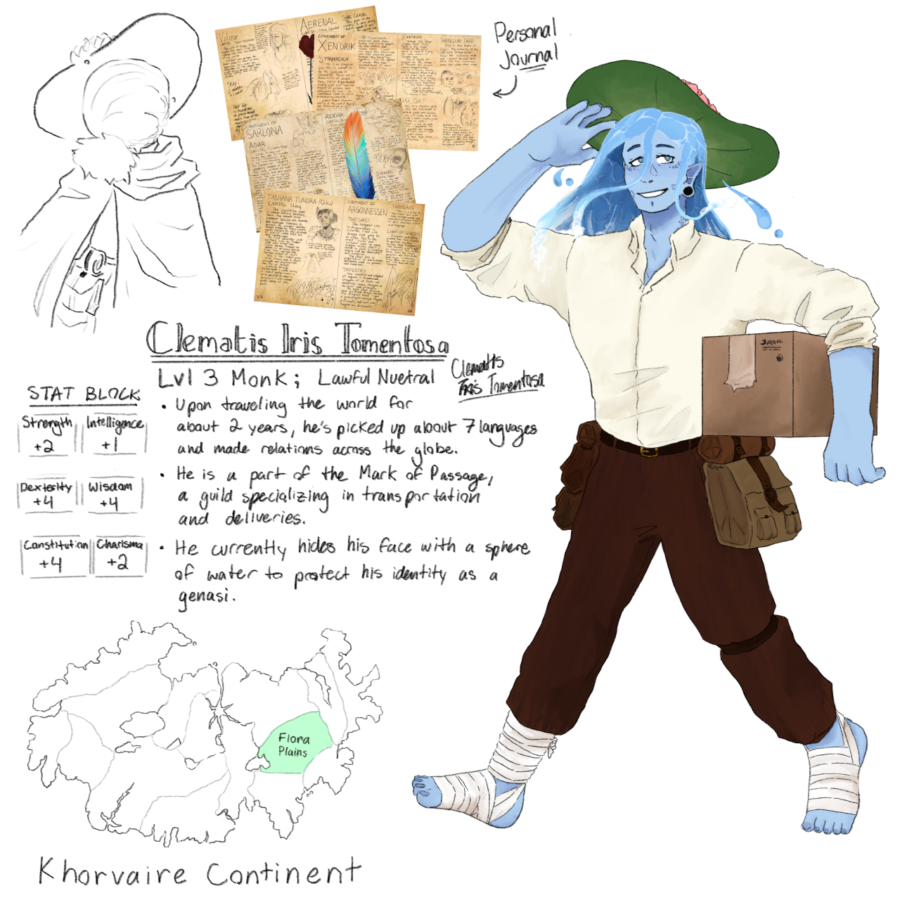Your donation will support the student journalists of Bellaire High School. Your contribution will allow us to purchase equipment and cover our annual website hosting costs.
Appropriation versus Appreciation
Mar 6, 2023
Authors such as JK Rowling and Stephen King failed to appreciate people’s cultures that their books are based off of. Unlike them though, author Kiera Drake who wrote “The Continent” had shown initiative in fixing her mistakes in her work by rewriting the entirety of it.
As a writer, artist and Dungeon & Dragons player, I love to write stories featuring people from different backgrounds. However, creating so many different types of characters can be hard, especially when aspects of their personalities are based on real cultures.
In the media, society is beginning to show more mixed-race representation, but misrepresentation of people’s cultures is still prevalent in people’s stories. Some examples of cultural appropriation in classic or renowned works include “Pet Sematary” by Stephen King and “The History of Magic in North America” by J. K. Rowling, both stories centered around other cultures’ folklore.
“This may be where people fail to understand the definition of cultural appropriation; it is defined as adopting something from a minority culture to benefit the dominant one,” a Medium journalist, Otis Robinson, wrote. “Before copying a style, it becomes necessary to appreciate the historical context of the object of attraction, and understand why so much opposition lies ahead if they choose to wear it in order to fully appreciate it.”
Immersing yourself in the study of your chosen culture and making active efforts to learn about it is cultural appreciation.
The act of taking something for your own use, without permission, is called appropriation. Appropriating minority’ cultures in particular, can cause real-world detriment to individual personalities, trivialize significant pieces of cultural history and take away respect from minority-developed work in favor of toxic stereotypes.
The unspoken rule
Cultural appropriation is just that: taking significant pieces of one’s culture (like braids, feathers, patterns or clothing) without properly representing said culture or following the unspoken rule: not using it at all.
Despite the rule being “unspoken,” it can be a very heated, open discussion for people of different cultures. A common example is Black braids and dreads. While some people may just think it’s a hairstyle, dreadlocks are deeply rooted in the history of Black culture.
When people (this includes everyone, but more often from a white/Caucasian background) take a piece of culture without thoroughly understanding, it hurts minorities by perpetuating ignorance of its origin. For instance, the ‘W’, is a piece of indigenous culture that shouldn’t be flaunted around, it isn’t just about whether you, the writer, “like something” or not.
What can you do to avoid cultural appropriation?
I believe that it’s important to write worlds and create stories of diverse characters. It creates depth, realism and helps you become more inclusive of crucial history and backgrounds.
Are you writing a story or a character?
Knowing where the focus of the story is dictates the extent to which you should research (I’m not saying you should be lazy in your personal homework on the culture). Ask yourself, “is it my place to tell this story?”
Depending on the significance of the role the person’s culture takes in your story, you can likely provide excellent representation to the community by following the right steps. For example, if you write your main character as an embodiment of the culture of your choice, its importance to the story is different than writing a culturally-tokenized side character.
If the focus of the story is the culture, and your goal is to tell someone else’s story, Proofed provides you with spot-on-questions you should ask yourself before writing.
It is important to recognize that, when telling a story about a culture other than yours, you owe that culture’s people good representation and appreciation.
Do your research
It may be hard to get started, but some important things to keep in mind are:
- Ask yourself the five W’s and H (who, what, when, where, how.) These questions can help you get a basic understanding of the culture and help you ask new questions and learn new things you may have not known to learn.
- Example: What are foods eaten at Chinese New Year? Why are they important?
- There are a lot of foods heavy in meat and rice, ranging from prosperity in health to wealth. One of the reasons why there are many dishes that are good luck for money is because during the development of China there was a lot of poverty.
- What are you focusing on or emphasizing in your writing?
- How does it clash with other cultures?
- What are the sensitive topics or absolute don’ts? (Are there things you absolutely shouldn’t joke about or write about in reference to a character’s culture?)
- Avoid stereotypes and find a multitude of different sources to avoid biases. Doing thorough research builds authenticity.
- Keep links and sources! While you don’t need to pull out a full MLA format to cite sources, it can be helpful to jot websites and literature down to support your writing, remind yourself in case of doubt and find new information through the same sources.
While doing research doesn’t directly tell you how to write a character or a story, knowing how history and culture shapes the way real people work and act can help you write the way characters function in your story.
Talk to someone of the culture you’re writing about and ask respectful questions
By meeting someone in person or online to do some one-on-one research, you will be more informed and aware of the culture’s colloquial values, interactions and customs. If you maintain respect and refrain from interrogating your culture source, that person is likely more than happy to talk about their culture and small things that make them, them. However, you should recognize that asking one person questions to substantiate your research shouldn’t be the only factor on your journey to cultural appreciation. One person or even a few people are not representative of the entire culture.
If you can’t find someone or are avoidant of talking with someone, it’s all okay. There have been and there can be culturally appreciative stories that have been written successfully without speaking to members of said culture.
What isn’t cultural appropriation?
From ants to the constellations in the sky, everything has meaning and history, so there isn’t necessarily a simple “yes-no” cultural item.
A minor solution is using everyday, generalized things (such as: shapes, colors, furniture, textures, flowers, food) that can be adapted as a baseline to fiction you may want to write.
Do I have to write diverse characters?
From r/india, two users comment on a Kentucky yoga poster that shows Ganesha, a religious figure from Hindu. They both acknowledge that despite it being appropriation, that at the end of the day it doesn’t harm anyone.
The “easy way out” is to never write a character who didn’t share your background because of the repercussions or guilt, but while you might not share your ideas or stories to an audience composed of individuals from every culture, it’s good to practice respectfulness and recognize the breadth of experiences in our world. We are constantly surrounded by people who are different from us, especially when living in a place like Houston. It’s good to become aware of how the places where people come from or live in affect the way they act and how they think. Writing about people different from yourself is how you become successful, in all of the general terms, and not necessarily talking about publications or financial results.
That being said, I’m not arguing that all writing that isn’t inclusive of diverse characters is in any way bad. You can create characters of the same race, try your best to avoid cultural appropriation entirely, but the point in practicing diversity in your work is to foster depth and expand your audience’s relatability (realistically, we just aren’t all the same.)
“Research is essential, but there comes a moment when you have to let go of that research and start writing,” author Laila Lalami said.
While there is an importance for respecting culture and being watchful, a lot of people don’t mind using their culture in things like a religious figure on a poster for a yoga event. Not everything is cultural appropriation; no one is going to chase you down for wearing jade.
All of this work is hard and sometimes boring, but it shouldn’t hinder you from expressing creativity. While the story you may want to write isn’t just about whether you, the writer, “like something” or not, liking a culture is the beginning of appreciation and joy in work. Writing is still meant to be fun.
What I did
When making a complete character from scratch for a campaign, I think it’s important to give your dungeon master every little detail to help them create the base story to send your characters on, especially if you’re creating a homebrew idea.
After being invited to a Dungeons & Dragons campaign (Book of Eberron), I noticed that, midway through making my character, aspects of my character’s culture took unintentional inspiration from Indigenous culture. When I realized this, I started taking notes and doing historical research about the culture I wanted to adapt. I also messaged an online friend–who is a Native American – to fact check my work and adaptation to D&D.
My adaptation was a Genasi tribe that has a culture strongly focused on the seasons and flowers grown on their lands. My character is the heir to be the next leader and hopes to grow his tribe’s future by making connections with foreign nations. Clematis Iris Tomentosa is a water Genasi and now travels with my D&D party to complete its journey around the world.
It was a lot of fun working with my friend as well as learning more about indigenous and world culture. Something that was specifically interesting to me was learning more about the significance of names and naming ceremonies. While my online friend “doesn’t really have ceremonies for naming, it changes with each tribe. When boys reach adolescence, they’re given a ‘man name’ by an elder or medicine man.” They believe medicines are more common names for their culture.
There are always more things that we can do to work against cultural appropriation. I recognize that there may be flaws within my process, such as only referring to one person for accuracy and clarification, but after reflecting on my work, I’m proud of what I created.



Ella Sotiriades • Mar 7, 2023 at 2:04 pm
This is really well written and insightful!